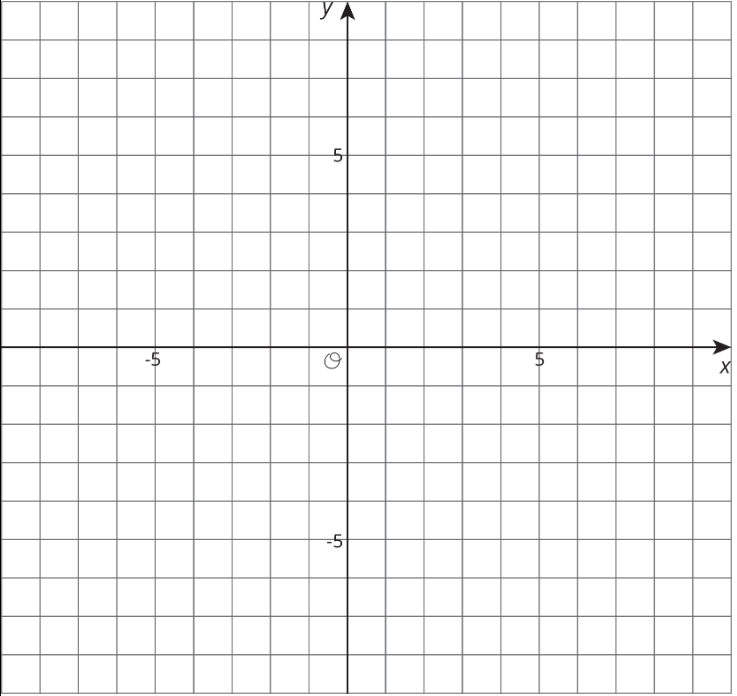7.3.1: Describing Large and Small Numbers Using Powers of 10
- Page ID
- 36796
\( \newcommand{\vecs}[1]{\overset { \scriptstyle \rightharpoonup} {\mathbf{#1}} } \)
\( \newcommand{\vecd}[1]{\overset{-\!-\!\rightharpoonup}{\vphantom{a}\smash {#1}}} \)
\( \newcommand{\id}{\mathrm{id}}\) \( \newcommand{\Span}{\mathrm{span}}\)
( \newcommand{\kernel}{\mathrm{null}\,}\) \( \newcommand{\range}{\mathrm{range}\,}\)
\( \newcommand{\RealPart}{\mathrm{Re}}\) \( \newcommand{\ImaginaryPart}{\mathrm{Im}}\)
\( \newcommand{\Argument}{\mathrm{Arg}}\) \( \newcommand{\norm}[1]{\| #1 \|}\)
\( \newcommand{\inner}[2]{\langle #1, #2 \rangle}\)
\( \newcommand{\Span}{\mathrm{span}}\)
\( \newcommand{\id}{\mathrm{id}}\)
\( \newcommand{\Span}{\mathrm{span}}\)
\( \newcommand{\kernel}{\mathrm{null}\,}\)
\( \newcommand{\range}{\mathrm{range}\,}\)
\( \newcommand{\RealPart}{\mathrm{Re}}\)
\( \newcommand{\ImaginaryPart}{\mathrm{Im}}\)
\( \newcommand{\Argument}{\mathrm{Arg}}\)
\( \newcommand{\norm}[1]{\| #1 \|}\)
\( \newcommand{\inner}[2]{\langle #1, #2 \rangle}\)
\( \newcommand{\Span}{\mathrm{span}}\) \( \newcommand{\AA}{\unicode[.8,0]{x212B}}\)
\( \newcommand{\vectorA}[1]{\vec{#1}} % arrow\)
\( \newcommand{\vectorAt}[1]{\vec{\text{#1}}} % arrow\)
\( \newcommand{\vectorB}[1]{\overset { \scriptstyle \rightharpoonup} {\mathbf{#1}} } \)
\( \newcommand{\vectorC}[1]{\textbf{#1}} \)
\( \newcommand{\vectorD}[1]{\overrightarrow{#1}} \)
\( \newcommand{\vectorDt}[1]{\overrightarrow{\text{#1}}} \)
\( \newcommand{\vectE}[1]{\overset{-\!-\!\rightharpoonup}{\vphantom{a}\smash{\mathbf {#1}}}} \)
\( \newcommand{\vecs}[1]{\overset { \scriptstyle \rightharpoonup} {\mathbf{#1}} } \)
\( \newcommand{\vecd}[1]{\overset{-\!-\!\rightharpoonup}{\vphantom{a}\smash {#1}}} \)
Lesson
Let's find out how to use powers of 10 to write large or small numbers.
Exercise \(\PageIndex{1}\): Thousand Million Billion Trillion
1. Match each expression with its corresponding value and word.

2. For each of the numbers, think of something in the world that is described by that number.
Exercise \(\PageIndex{2}\): Base-ten Representations Matching
1. Match each expression to one or more diagrams that could represent it. For each match, explain what the value of a single small square would have to be.
- \(2\cdot 10^{-1}+4\cdot 10^{-2}\)
- \(2\cdot 10^{-1}+4\cdot 10^{-3}\)
- \(2\cdot 10^{3}+4\cdot 10^{1}\)
- \(2\cdot 10^{3}+4\cdot 10^{2}\)

2.
a. Write an expression to describe the base-ten diagram if each small square represents \(10^{-4}\). What is the value of this expression?

b. How does changing the value of the small square change the value of the expression? Explain or show your thinking.
c. Select at least two different powers of 10 for the small square, and write the corresponding expressions to describe the base-ten diagram. What is the value of each of your expressions?
Exercise \(\PageIndex{3}\): Using Powers of 10 to Describe Large and Small Numbers
Your teacher will give you a card that tells you whether you are Partner A or B and gives you the information that is missing from your partner’s statements. Do not show your card to your partner.
Read each statement assigned to you, ask your partner for the missing information, and write the number your partner tells you.
Partner A’s statements:
- Around the world, about ______________________ pencils are made each year.
- The mass of a proton is ______________________ kilograms.
- The population of Russia is about ______________________ people.
- The diameter of a bacteria cell is about ______________________ meter.
Partner B’s statements:
- Light waves travel through space at a speed of ______________________ meters per second.
- The population of India is about ______________________ people.
- The wavelength of a gamma ray is _______________________ meters.
- The tardigrade (water bear) is ______________ meters long.
Are you ready for more?
A “googol” is a name for a really big number: a 1 followed by 100 zeros.
- If you square a googol, how many zeros will the answer have? Show your reasoning.
- If you raise a googol to the googol power, how many zeros will the answer have? Show your reasoning.
Summary
Sometimes powers of 10 are helpful for expressing quantities, especially very large or very small quantities. For example, the United States Mint has made over
\(500,000,000,000\)
pennies. In order to understand this number, we have to count all the zeros. Since there are 11 of them, this means there are 500 billion pennies. Using powers of 10, we can write this as: \(500\cdot 10^{9}\) (five hundred times a billion), or even as: \(5\cdot 10^{11}\) The advantage to using powers of 10 to write a large number is that they help us see right away how large the number is by looking at the exponent.
The same is true for small quantities. For example, a single atom of carbon weighs about
\(0.0000000000000000000000199\)
grams. We can write this using powers of 10 as \(199\cdot 10^{-25}\) or, equivalently, \((1.99)\cdot 10^{-23}\) Not only do powers of 10 make it easier to write this number, but they also help avoid errors since it would be very easy to write an extra zero or leave one out when writing out the decimal because there are so many to keep track of!
Practice
Exercise \(\PageIndex{4}\)
Match each number to its name.
- \(1,000,000\)
- \(0.01\)
- \(1,000,000,000\)
- \(0.000001\)
- \(0.001\)
- \(10,000\)
- One hundredth
- One thousandth
- One millionth
- Ten thousand
- One million
- One billion
Exercise \(\PageIndex{5}\)
Write each expression as a multiple of a power of 10:
- \(42,300\)
- \(2,000\)
- \(9,200,000\)
- Four thousand
- 80 million
- 32 billion
Exercise \(\PageIndex{6}\)
Each statement contains a quantity. Rewrite each quantity using a power of 10.
- There are about 37 trillion cells in an average human body.
- The Milky Way contains about 300 billion stars.
- A sharp knife is 23 millionths of a meter thick at its tip.
- The wall of a certain cell in the human body is 4 nanometers thick. (A nanometer is one billionth of a meter.)
Exercise \(\PageIndex{7}\)
A fully inflated basketball has a radius of 12 cm. Your basketball is only inflated halfway. How many more cubic centimeters of air does your ball need to fully inflate? Express your answer in terms of \(\pi\). Then estimate how many cubic centimeters this is by using 3.14 to approximate \(\pi\).
(From Unit 5.5.4)
Exercise \(\PageIndex{8}\)
Solve each of these equations. Explain or show your reasoning.
\[2(3-2c)=30\qquad 3x-2=7-6x\qquad 31=5(b-2)\nonumber\]
(From Unit 4.2.4)
Exercise \(\PageIndex{9}\)
Graph the line going through \((-6,1)\) with a slope of \(\frac{-2}{3}\) and write its equation.

(From Unit 3.3.2)


